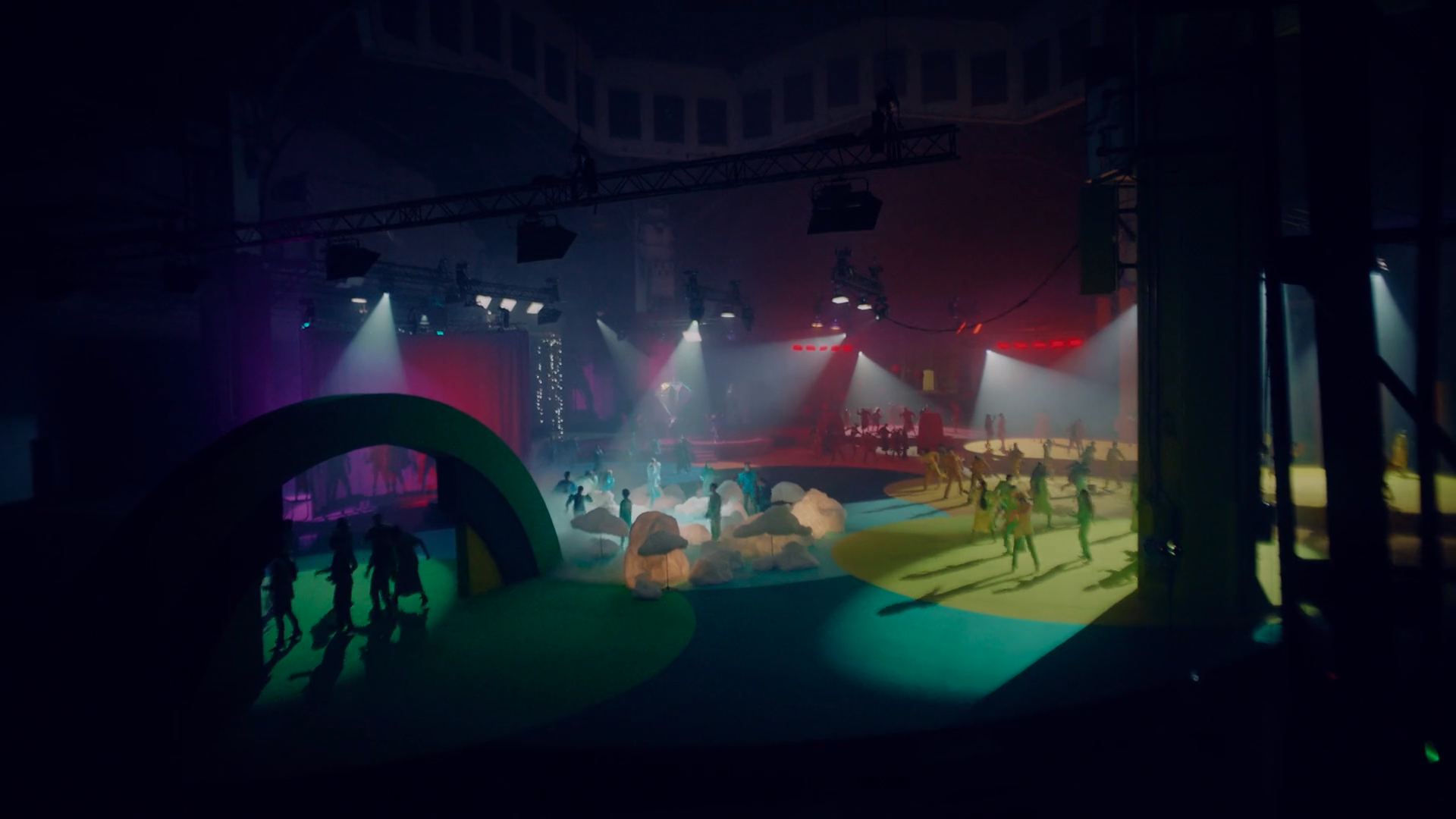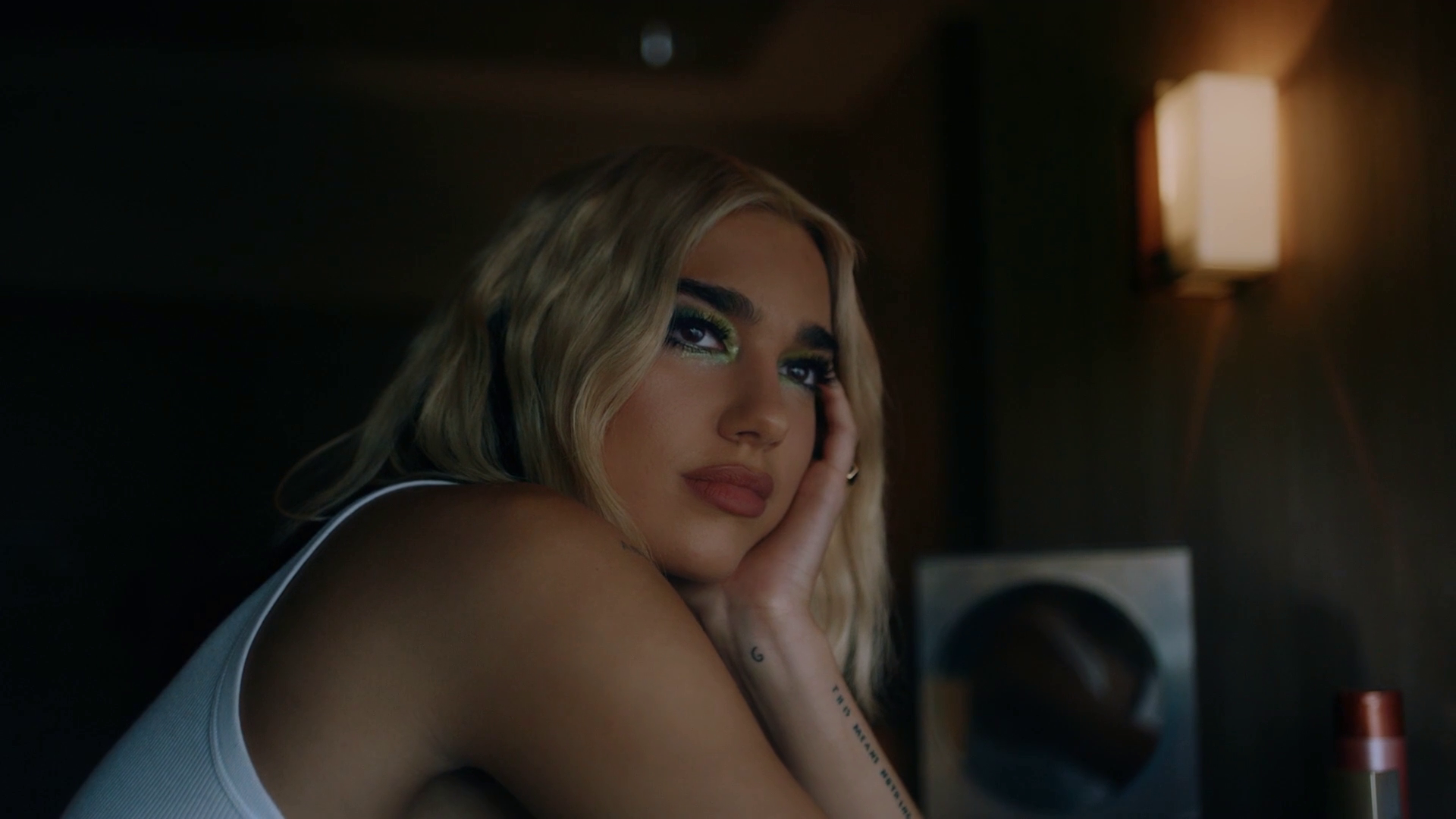High concept pop videos are back, people! Remember the hours spent hunched over Youtube, scribbling an intricate mind map of all the references in Lady Gaga’s “Telephone video”, sweat trickling from your brow as you squint at Tarantino’s Beyonce-helmed Pussy Wagon? Well, now we can revisit our heady days of cultural detective work by watching none other than Dua Lipa, whose ascent to art girl glory is well underway, in her new video for “Physical”.
The internet collectively peed itself on Friday when “Physical” cropped up on streaming services, with Popjustice’s Peter Robinson claiming it was simply “bad manners” to drop the song of the year in January. He later populated the blog’s New Music Friday playlist with Dua Lipa 26 times in a row. An undeniable mood. Gays and girls around the world keeled over and had to be resuscitated by bemused straight friends/blokes who looked at each other in bewilderment and mouthed ‘I don’t get it?’ Well, i-D gets you, and we are here to help.
The only thing more over-stimulating than the song itself is the kaleidoscopic video. At first glance, it’s a strange smorgasbord of textual and visual references. Lipa rollerblades in a dizzying yellow circle, which seems an obvious nod to the disco influences in the new album. Anime-inspired cartoons, where Dua rips out her lover’s pulsating LED heart, interrupt the live action dance sequences. As the minutes tick on, she cycles through different coloured outfits which match up to the different coloured arenas she trots between: red, then yellow, then blue, then green. Finally, all the colour-coded dancers break out of their monochromatic universes and rush together to form a tempestuous rainbow mass in the centre. “Let’s get physical!” Dua insists.
Once the credits rolled, the question which seemed to buzz most urgently around our still-hanging-open mouths was this: why did one of the dancers’ jackets say “sausages” on it? More urgently, what did all of the other jackets say, and why did they say anything in the first place? Dua, please! A forensic screenshot-by-screenshot investigation reveals still further mysteries. Scattered amongst the sausages are more references to processed meat: “fuet”, a kind of cured Catalan sausage, makes a cameo, as does the more humble “hot dog”. If you’re thinking there’s a phallic theme here, you’re not far off. Turns out the video is all about the orgasm.

Catalan director Lope Serrano conceived the video under his company CANADA, along with his partner Nicolás Méndez. The rainbow colour palette in the video immediately suggests ‘pride’ to the curious eye. Could it be that the colours in the video correspond to the different stripes of the original pride flag created by Gilbert Baker in 1978? In his flag, each colour represented a part of the LGBT community, e.g. green equalled nature. Dua’s green dancers display words like “fish”, “hawk” and “kangaroo”. This would be a fitting tribute to queerness given the album’s disco and synth-pop influences — gay black drag queen Sylvester pioneered disco music in the 70s, before queer artists like Boy George and Bronski Beat advanced synthpop in 80s Britain.
“Well, diversity was for sure very intentional” Lope says, referring to how both mixed- and same-gender couples dance at the conclusion of the video. “At the end, the idea is that all the colours (concepts) break their chromatic group obedience and meet together in a purely human celebration of lust and freedom and eclecticism”. The climax of the video is a rejection of the idea of sex as a constrained, heteronormative ideal. This, combined with Dua’s teasing lyrics — “common love isn’t for us” — makes it easy to understand why the song is being received so well by queer fans.
It transpires, however, that the nouns on the jackets aren’t connected to pride flag categories; they actually come from a lesser-known piece by Swiss artists Peter Fischli and David Weiss. “In their conceptual diagram called Order and Cleanliness (1981), Fischli and Weiss asserted their four main universal concepts that make up the world. These were HUMAN BEING (DER MENSCH), EMOTIONS (GEFÜHLE), ANIMALS (DAS TIER) and MATTER (MATTER),” Lope explains.
These four primary concepts, which the director matched with the primary colours, intersect to form new concepts, and these are supposed to describe everything in existence, e.g. the intersection of ANIMALS and MATTER is MEAT (sausages!!!). Every dancer in each colour (concept) category wears slogans relating to that category. Where HUMANS meet MATTER, you get TECHNOLOGY, which explains the strange occurrences of “valve”, “spark plug” and “limousine”.
“This results in a single concept forming the nucleus of the map, the centre of existence: ORGASM,” the director says, indicating the point when the dancers flood into the middle of the stage. “Orgasm is the physical peak of being alive!” Suddenly those sausages are looking terribly interesting again. The animated bird she chases throughout, then, can be alternately understood as love or — amazing sex! When Dua and her dance partner recline in their blue sports car, we can only assume they are in a blissful post-coital daze!

So what inspired Lope to connect this obscure art piece with Dua’s lyrics?
“Well, for me it’s a song about a genuine desire for human contact. It’s a sexy track that drives you magnetically to a climax (let’s get physical!). At the same time, the song has an increasing trajectory. The recurrent verses are repeated six times in the second half of the song as a crescendo, the same way it happens in real life with sexual arousal” he reasons.
In the teaser for “Physical”, Dua solves a Rubik’s cube while gazing wistfully out her apartment window. While you might have thought this was a very nerdy way of killing time in the afternoon, it’s in fact an allegory for her bringing all the colour categories together in harmony, and reaching the pinnacle of existence, i.e. the perfect orgasm, duh! And you thought she was bored!
Dua came on board with the concept immediately, and she and the directors became eager co-conspirators in the video’s double meaning. “We were lucky to work with an artist who was a sensitive and complicit gaze, a partner-in-crime. I guess that is a sign of boldness of artistry, to be open to explore a concept and squeeze it without limits.” Dua’s openness to intricate concepts seems particularly refreshing because this art of allegory, layered hints and playfulness seems to have become rarefied in the pop big leagues, with labels increasingly eager to keep unprofitable visual projects under budget. Why does this adventurousness seem to be dying out?
Lope says that even if videos are high concept in their inception, it’s often difficult to get that across in the final product. “With videos, it’s easy to fall into the temptation of randomness and visual gratification,” says Lope. “As CANADA, Nicolás Méndez and I try to find a concept that acts like a framework, so it eventually still guides you to find the right visual solutions. Sometimes you have ways of showing these rules of procedure, sometimes not. High concept is sometimes so subtle that even the ones who have a strong conceptual base don’t get to make it obvious. We’re lucky she gave us the chance of shooting this teaser with these hidden clues in it.”
Good thing Dua is a lot of fun then! *adds Physical to our sex playlist*

